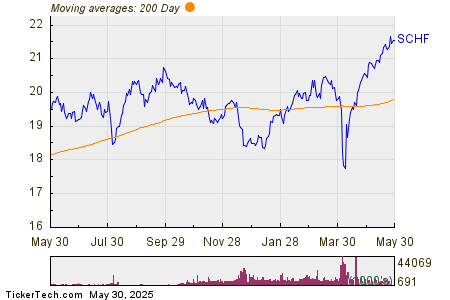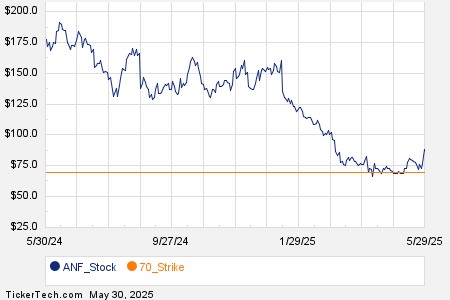Coffee Prices Slide as Production Outlook Brightens Globally
On Thursday, July arabica coffee (KCN25) finished down -3.55 (-1.01%) and July ICE robusta coffee (RMN25) dropped -26 (-0.57%).
Coffee prices continued a month-long decline, with arabica hitting a 7-week low and robusta at a 6.5-month low.
Supply Pressures Affect Coffee Markets
Over the past month, coffee prices have faced downward pressure due to predicted increases in production. The USDA’s Foreign Agricultural Service (FAS) has projected that Brazil’s 2025/26 coffee production will rise by 0.5% year-over-year (y/y) to 65 million bags, while Vietnam’s production is expected to increase by 6.9% y/y to 31 million bags. Brazil and Vietnam dominate the global arabica and robusta coffee markets, respectively.
An increase in ICE coffee inventories has also contributed to lower prices. Robust inventories of robusta coffee reached an 8-month high of 5,438 lots last Friday, while arabica coffee inventories hit a 3.75-month high of 892,468 bags on Tuesday.
Additionally, on May 9, the USDA forecasted that Honduras, Central America’s largest coffee producer, will see a 5.1% y/y increase in 2025/26 coffee production, reaching 5.8 million bags. Brazil’s updated production estimate rose to 65.51 million bags, according to consulting firm Safras & Mercado, while CONAB increased Brazil’s estimate to 55.7 million bags from a previous 51.81 million bags.
Demand Concerns Weigh on Prices
Concerns about demand are impacting coffee prices negatively. Major importers like Starbucks, Hershey, and Mondelez International cited that the U.S. baseline 10% tariffs on imports may drive up prices, affecting sales volumes.
Weather and Export Outlook
Uncertain weather patterns in Brazil could provide some support for prices. Somar Meteorologia reported that the key arabica growing area of Minas Gerais received only 0.3 mm of rain last week, about 4% of the historical average.
Brazil’s smaller coffee exports could also bolster prices. Cecafe reported that green coffee exports in April fell by 28% y/y to 3.05 million bags, with total January-April exports down 15.5% y/y to 13.186 million bags.
Robusta coffee benefits from reduced production in Vietnam. The country’s coffee output for the 2023/24 crop year declined by 20% to 1.472 million metric tons—the smallest crop in four years. Vietnam’s coffee exports for 2024 are projected to decrease by 17.1% y/y to 1.35 million metric tons.
Future Projections and Reports
In a mixed USDA biannual report released on December 18, the FAS projected global coffee production would increase by 4.0% y/y to 174.855 million bags for 2024/25. This includes a 1.5% rise in arabica production and a 7.5% rise in robusta production. However, the USDA also forecasts a drop in ending stocks to a 25-year low of 20.867 million bags.
For the 2025/26 marketing year, Volcafe lowered its Brazil arabica coffee production estimate to 34.4 million bags due to serious drought conditions. The firm also predicts a global arabica deficit of 8.5 million bags for that year, continuing a trend of deficits over the past five years.
On the date of publication, Rich Asplund did not hold positions in any securities mentioned. All data is for informational purposes only. Please view the Barchart Disclosure Policy
here.
More news from Barchart.
The views and opinions expressed herein are those of the author and do not necessarily reflect those of Nasdaq, Inc.




